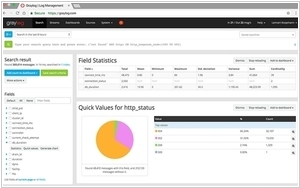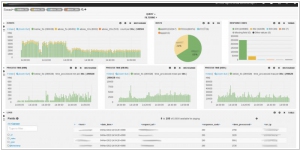Graylog vs Logstash
July 31, 2023 | Author: Michael Stromann
See also:
Top 10 SIEM software
Top 10 SIEM software
Graylog and Logstash are both popular tools used for log management and analysis, but they have key differences in their features and functionalities. Graylog is a comprehensive log management platform that provides centralized log collection, storage, and analysis. It offers a user-friendly web interface for exploring and searching log data, as well as advanced features like alerting, dashboards, and user access controls. Graylog is designed to handle large volumes of log data efficiently and provides easy integration with various data sources, making it suitable for organizations seeking a comprehensive log management solution.
On the other hand, Logstash is a component of the Elastic Stack, primarily used for log ingestion and data processing. It excels in parsing, enriching, and transforming log data from diverse sources before forwarding it to other components of the Elastic Stack, such as Elasticsearch for storage and Kibana for visualization. Logstash is highly flexible and extensible, allowing users to create custom plugins for various data inputs, filters, and outputs. Its focus on log processing and data transformation makes it ideal for organizations that already use the Elastic Stack or have specific data processing needs.
Another key difference lies in their deployment models. Graylog is a standalone solution that can be deployed on-premises or in the cloud, offering more control over the infrastructure and data. Logstash, being part of the Elastic Stack, is typically deployed alongside Elasticsearch and Kibana, either on-premises or in the cloud. This integrated approach simplifies the setup for organizations already using the Elastic Stack or those seeking a seamless log management solution with Elasticsearch and Kibana.
See also: Top 10 SIEM software
On the other hand, Logstash is a component of the Elastic Stack, primarily used for log ingestion and data processing. It excels in parsing, enriching, and transforming log data from diverse sources before forwarding it to other components of the Elastic Stack, such as Elasticsearch for storage and Kibana for visualization. Logstash is highly flexible and extensible, allowing users to create custom plugins for various data inputs, filters, and outputs. Its focus on log processing and data transformation makes it ideal for organizations that already use the Elastic Stack or have specific data processing needs.
Another key difference lies in their deployment models. Graylog is a standalone solution that can be deployed on-premises or in the cloud, offering more control over the infrastructure and data. Logstash, being part of the Elastic Stack, is typically deployed alongside Elasticsearch and Kibana, either on-premises or in the cloud. This integrated approach simplifies the setup for organizations already using the Elastic Stack or those seeking a seamless log management solution with Elasticsearch and Kibana.
See also: Top 10 SIEM software





